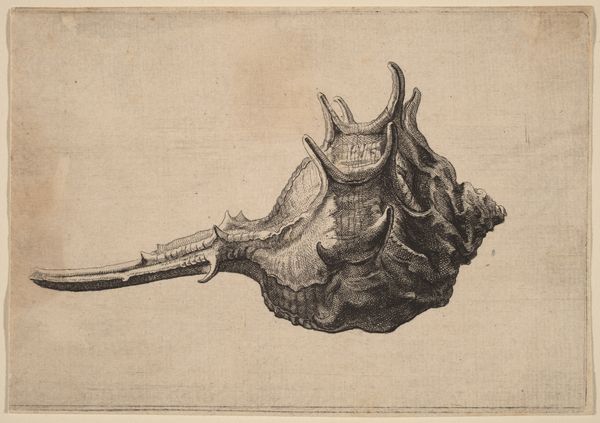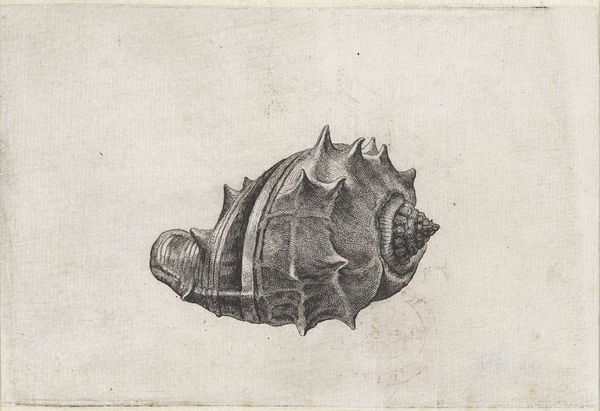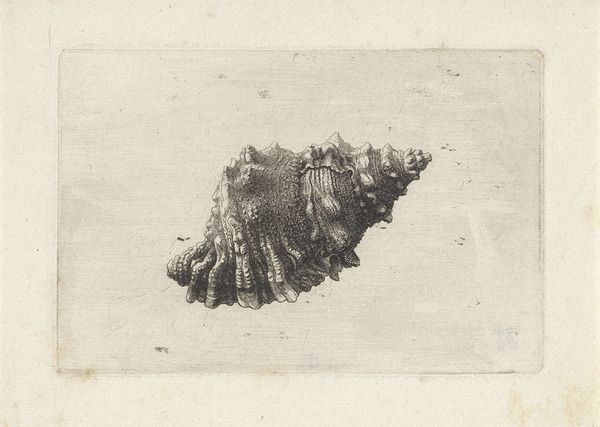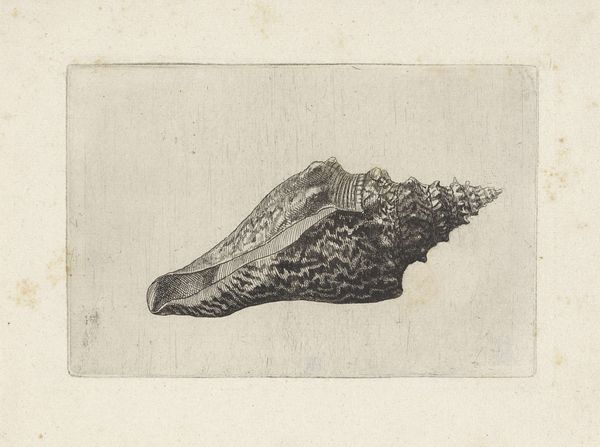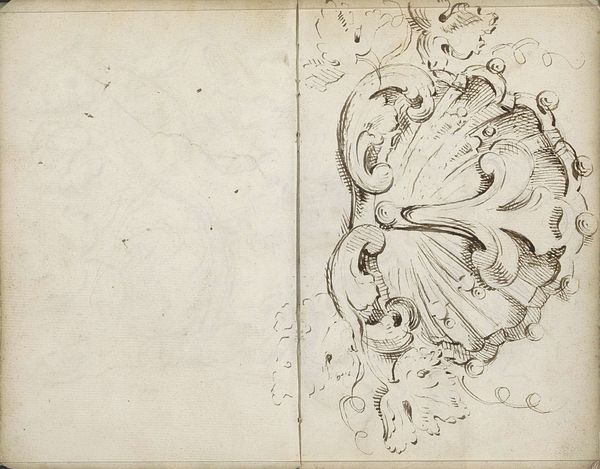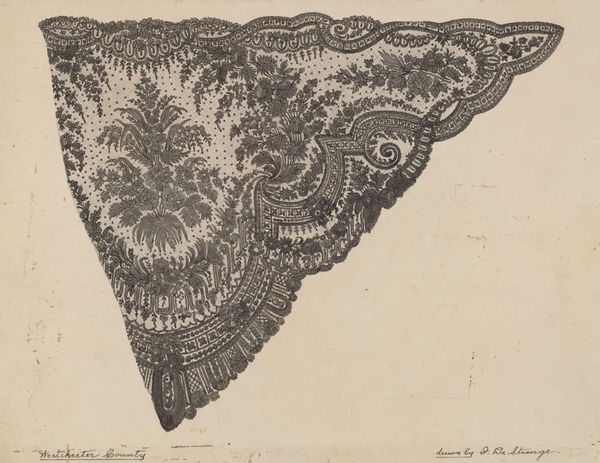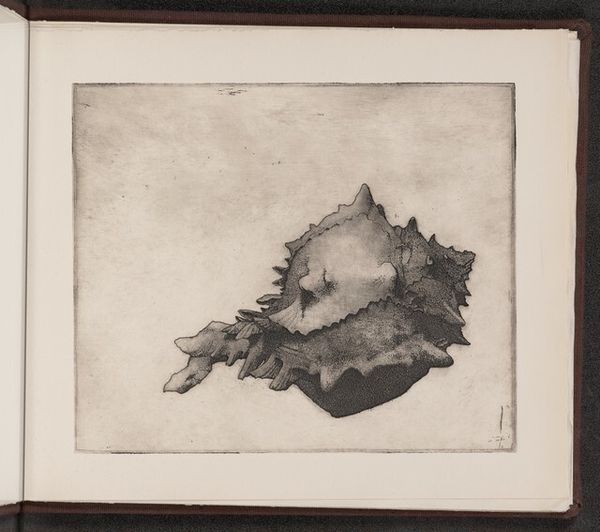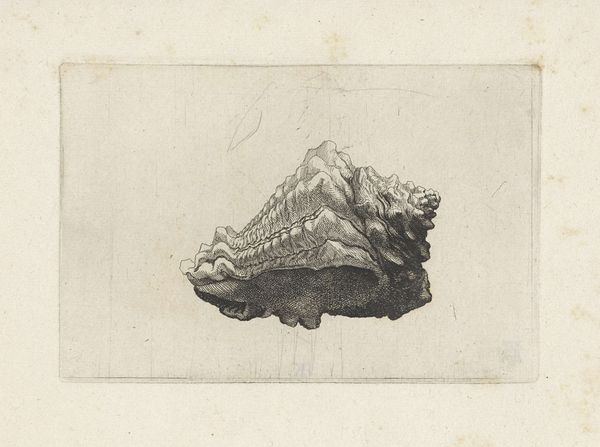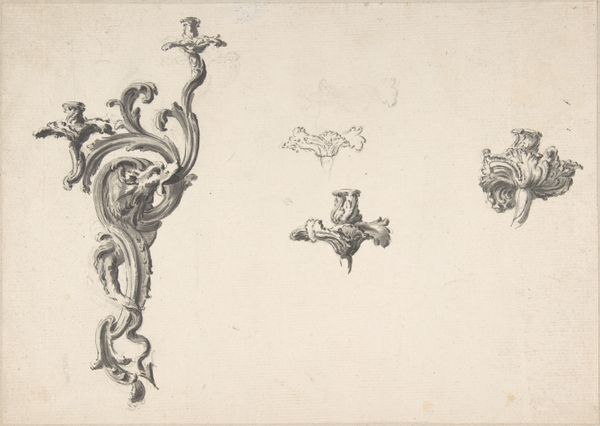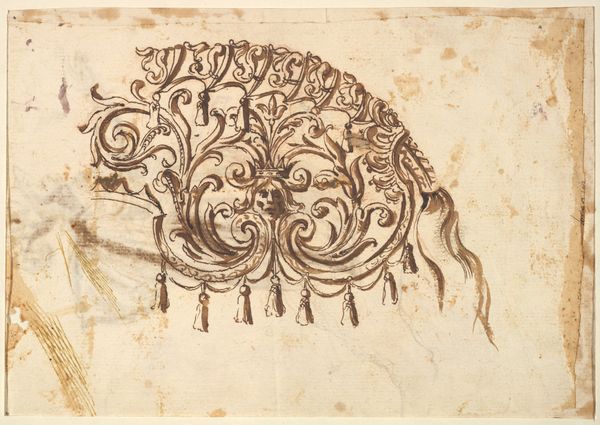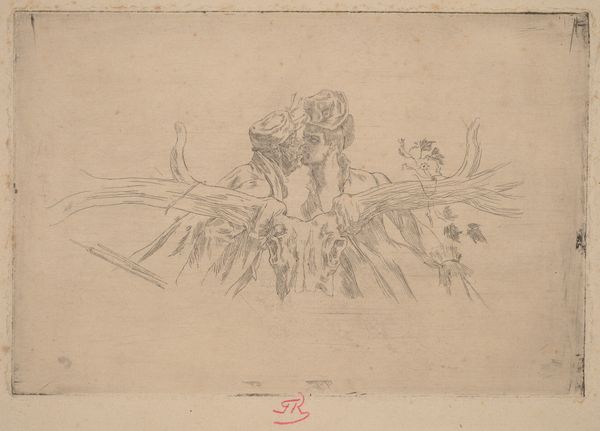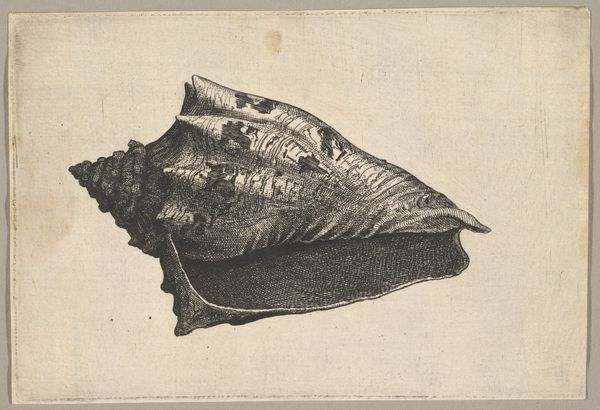
#
toned paper
#
light pencil work
# print
#
pencil sketch
#
personal sketchbook
#
ink drawing experimentation
#
pen-ink sketch
#
sketchbook drawing
#
watercolour illustration
#
sketchbook art
#
fantasy sketch
Dimensions: sheet (trimmed to platemark): 0.9 × 14.2 cm (3/8 × 5 9/16 in.)
Copyright: National Gallery of Art: CC0 1.0
Editor: This is Wenceslaus Hollar's "Shell (Vasum ceramicum)," a print from around 1645. The level of detail in the shell's texture is striking. What do you see in this piece? Curator: Immediately, I'm drawn to the enduring fascination with natural forms. The shell, a symbol of pilgrimage and rebirth in many cultures, appears here meticulously rendered. Consider its spines—they echo crowns, fortifications, or even natural defenses. What cultural memory might these evoke for a 17th-century viewer? Editor: I hadn't thought about it that way. I was focused on how realistic it is. Were shells common subjects at the time? Curator: Precisely! Shells were increasingly popular, connected with expanding global trade, curiosity cabinets and even early scientific illustration. Hollar wasn't simply depicting a shell; he was engaging with themes of exploration, knowledge, and the wonders of the natural world, concepts intertwined with the symbolic weight of the object itself. Have you seen these in any early scientific texts? Editor: That’s fascinating. I see now that it’s more than just a pretty picture. It tells a story about its time. Curator: Indeed. Each carefully etched line whispers of cultural meanings and human curiosity, bridging art and science through a single, powerful image. These objects offer a gateway into the past! What new avenues has this opened for your perspective? Editor: Definitely more interested in how artists and the audience interact through common knowledge and symbols. Thank you!
Comments
No comments
Be the first to comment and join the conversation on the ultimate creative platform.
